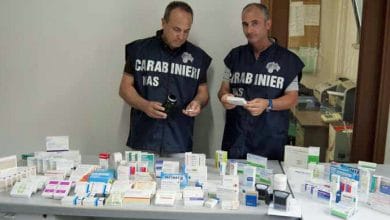
The innovative medicines node is highlighted. The political decision-maker between welfare needs and cost containment
Monday 19 January 2015 by Editorial board AboutPharma and Medical Devices
 In 2013, Italians paid 1,436 million euros into state coffers to purchase drugs prescribed with the "red" prescription, i.e. those paid for by the National Health Service (NHS). A figure equal to 1.3% of total current health expenditure. With an average per capita of around 24 euros (of which 9 per ticket on recipes). In the period 2009-2013, against an increase in the number of prescriptions of 6.3%, the amounts paid by citizens for co-payments and participation in the reference price of the drug increased by 66.6%. The photo is taken report of the Court of Auditors in the health section of the financial report for 2013 on local authorities with which it closes the annual cycle of its referent activity.
In 2013, Italians paid 1,436 million euros into state coffers to purchase drugs prescribed with the "red" prescription, i.e. those paid for by the National Health Service (NHS). A figure equal to 1.3% of total current health expenditure. With an average per capita of around 24 euros (of which 9 per ticket on recipes). In the period 2009-2013, against an increase in the number of prescriptions of 6.3%, the amounts paid by citizens for co-payments and participation in the reference price of the drug increased by 66.6%. The photo is taken report of the Court of Auditors in the health section of the financial report for 2013 on local authorities with which it closes the annual cycle of its referent activity.
The report highlights a contraction in healthcare expenditure over the last three years due to a reduction in personnel costs and in the agreed pharmaceutical expenditure. And it confirms the effectiveness of the containment measures of the territorial pharmaceutical sector and the difficulty of containing the hospital one. According to the report, the partial data for the current year confirm the constant increase in hospital pharmaceutical expenditure (+2.64% in the three-year period 2011-13, +24% in the first seven months of 2014 compared to the same period in 2013), which could negatively on the financial balance of the regional health services. Innovative drugs, which are one of the factors determining the increase in hospital pharmaceutical expenditure, "generate a further need for assistance - underlines the Court of Auditors - with respect to which, for the political decision-maker, the problem arises of a careful and not easy balance between cost containment needs and satisfaction of the request for health protection on the basis of the latest findings. This could lead to the need to adopt measures that take this particular profile into account, in order to adequately reshape the pharmaceutical expenditure policy".
The health system as a whole, despite persistent criticalities of the regional health services in some regions subject to a recovery plan, is reabsorbing previous deficits thanks to effective monitoring mechanisms.
"An improvement in the results - suggest the accounting magistrates - can certainly be achieved by increasing, through the active monitoring of the prescriptions, the controls on consumption and inappropriateness, for which, however, it is necessary for the State and the Regions to complete the IT infrastructures necessary to implement the health card system. In this regard, it is important that the Pact for digital health be implemented promptly - they warn -, provided for by article 15 of the new Health Pact for the years 2014-2016, "and the NSIS flow evolution plan, which is the tool for planning interventions on information systems essential for monitoring the Lea and the related costs".
Related news: The Court's recommendations: "Purchasing, prevention and territorial assistance centres"





